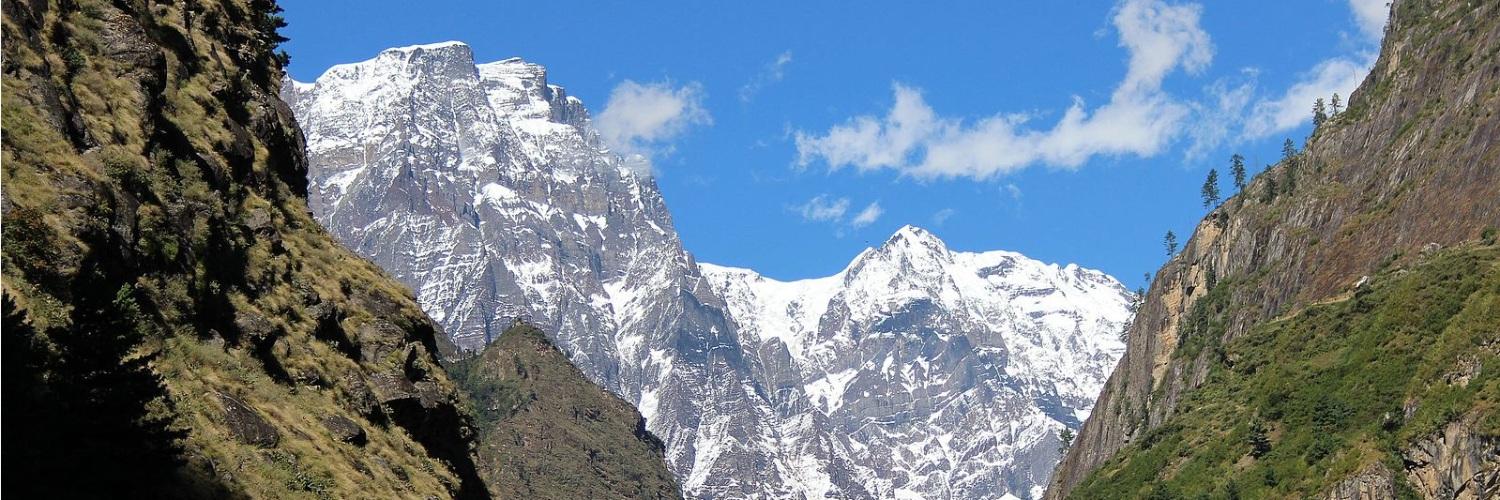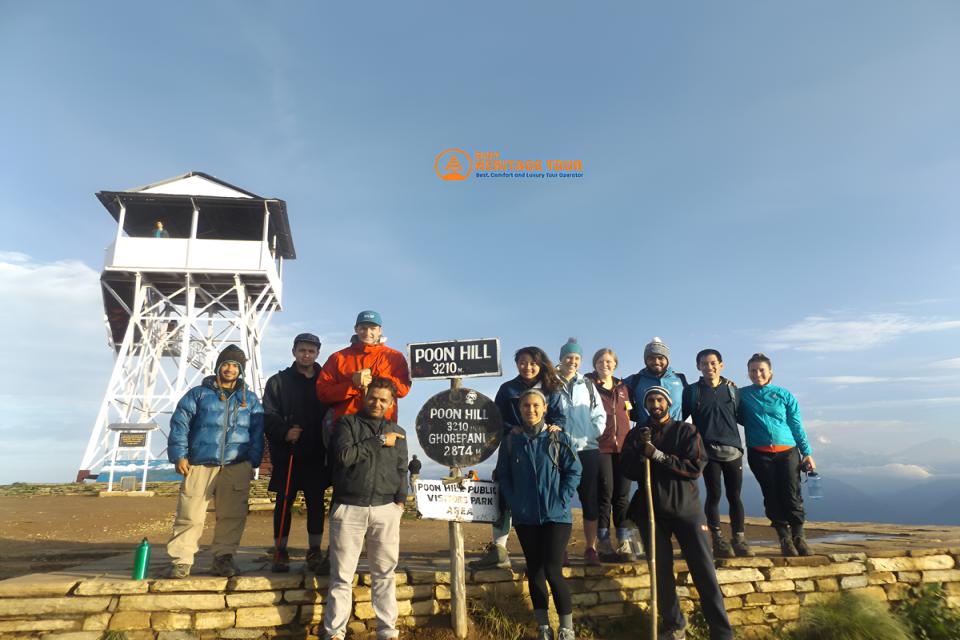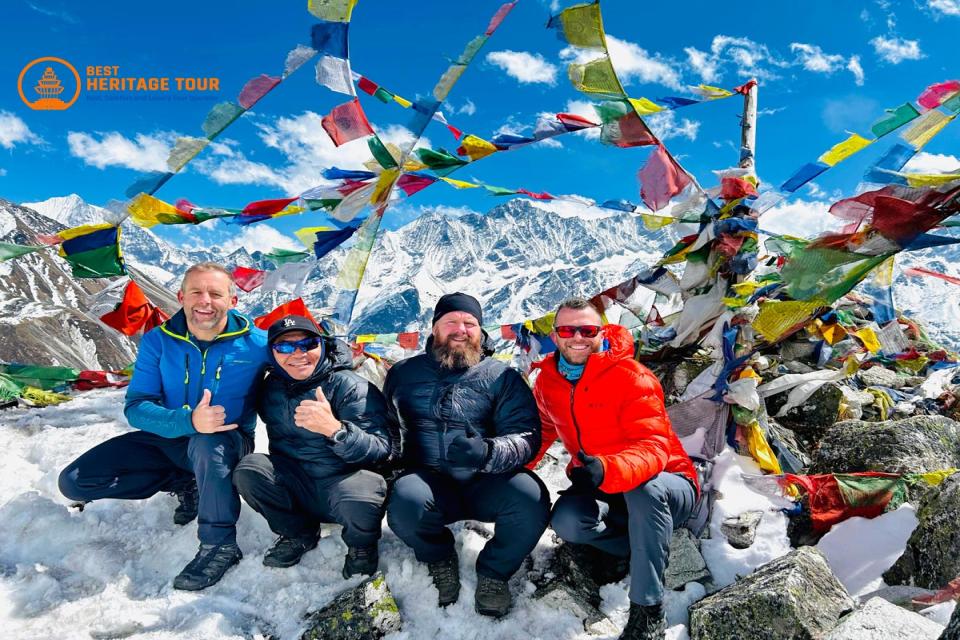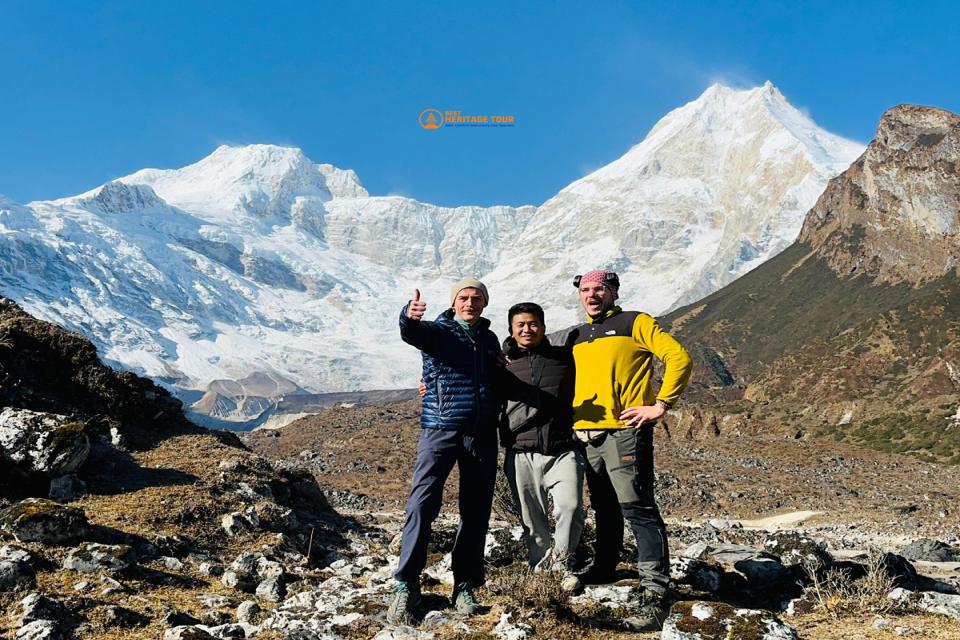Tucked away in the pristine landscapes of the Nepalese Himalayas, the Manaslu Circuit Trek is one of the most captivating, challenging, and rewarding treks in Nepal. Often overshadowed by more popular routes like Everest Base Camp and Annapurna Circuit, this off-the-beaten-path adventure through the Manaslu region is rapidly gaining popularity among seasoned hikers and wilderness lovers.
But one question echoes through every forum, travel agency, and trekking group chat: How difficult is the Manaslu Circuit Trek?
If you're planning a trekking adventure in Nepal and are curious whether the Manaslu region trekking route is the right fit for your fitness level and experience, this comprehensive guide will help you assess its true difficulty. From altitude and terrain to required fitness, gear, and psychological endurance, this blog explores every element of the Manaslu Circuit Trek's difficulty level.
Overview of the Manaslu Circuit Trek
Before diving into the nitty-gritty of the trek’s challenges, let’s understand what the Manaslu Circuit entails.
-
Location and Route Summary: The Manaslu Circuit circles around Mount Manaslu (8,163 meters), the eighth-highest mountain in the world. The trek typically starts from Soti Khola and ends at Dharapani, connecting with the Annapurna region. This trail takes you through lush green hills, traditional Gurung and Tibetan-style villages, and eventually into a high-altitude alpine desert with jaw-dropping mountain panoramas.
-
Total trekking distance: Approx. 177 kilometers
-
Typical trekking duration: 14 to 18 days
-
Maximum elevation: Larkya La Pass - 5,160 meters (16,929 ft.)
-
Region: Manaslu Conservation Area & Annapurna Conservation Area
-
Accommodation: Teahouses, lodges
-
Guide requirement: Mandatory (due to restricted area regulations)
-
Glimpse of the Trail: The trail offers everything from warm river valleys and suspension bridges to glacial moraines and High Mountain passes. In terms of remoteness, it is far more secluded than the Annapurna region or the Everest region, making it ideal for those seeking to explore authentic and untouched Nepal trekking routes.
-
Why It Appeals to Adventure Trekkers: Despite being less commercialized, the Manaslu region offers stunning scenery, rich cultural experiences, and rugged terrain, ideal for anyone seeking a true Himalayan adventure. However, this remoteness also contributes to the trek’s perceived difficulty, especially for less experienced hikers.
Trekking Altitude and Acclimatization
One of the most defining aspects of the Manaslu Circuit Trek difficulty is its altitude profile. The trek starts at around 710 meters (2,330 ft) in Soti Khola and gradually ascends to the dramatic Larkya La Pass at 5,160 meters (16,929 ft), one of the highest mountain passes trekked in Nepal.
Understanding the Altitude Gain
The gradual gain in elevation across several days helps the body acclimatize better, but the risk of Acute Mountain Sickness (AMS) is still very real, especially from Namrung (2,630 m) onwards. As you ascend toward Samagaun (3,530 m) and Dharamsala (4,460 m), proper acclimatization becomes essential.
Key Acclimatization Stops
- Namrung: A good early point for rest and light hikes
- Samagaun: Ideal for an extra acclimatization day; side trips to Manaslu Base Camp or Pungyen Gompa
- Samdo (3,875 m): Last major village before the pass, acclimatization and hydration are crucial
How to Prevent AMS
- Follow the “climb high, sleep low” rule
- Drink 3–4 liters of water daily
- Avoid alcohol
- Ascend slowly (no more than 300–500m gain per day above 3,000m)
- Consider Diamox for prevention if advised by a doctor
Altitude vs Trek Difficulty
The high altitude doesn’t necessarily mean steep climbs every day, but oxygen levels at 5,000+ meters are about 50% lower than sea level, making even basic movements more tiring. The thinner air adds to the mental and physical challenge.
If you’re new to trekking in Nepal or haven’t done a high-altitude hike before, this is a factor that should not be underestimated.
Daily Trekking Duration and Terrain Type
Another key factor that affects the Manaslu Circuit Trek difficulty level is the trail itself, both in terms of daily distance and the terrain you’ll walk on.
-
Average Walking Time: Expect to walk 6 to 8 hours per day, covering 10 to 18 km depending on altitude and trail conditions. Some shorter days are meant for acclimatization, but longer days, especially those leading up to and after Larkya La Pass, can be physically demanding.
-
Trail Conditions: The Manaslu region trekking trail is remote and often rugged. You’ll encounter:
- Rocky paths and uneven surfaces
- Steep switchbacks and loose scree
- Narrow paths carved along cliffs
- Landslide zones and glacial river crossings
- Snow and icy trails near the pass
During the monsoon, trails can be slippery and leech-infested in lower altitudes. In winter, snow makes crossing Larkya La very difficult.
- Notable Obstacles:
- Suspension bridges are high above rivers
- Water crossings without proper bridges
- Loose stones on narrow ridgelines
- Possible snow blockage in the off-season
Even though no technical climbing is required, the diversity and unpredictability of the terrain add a considerable challenge.
Required Fitness Level and Training Tips
So, how fit do you need to be? You don’t need to be a mountaineer, but good physical fitness is non-negotiable. Your body must handle consecutive days of hiking, altitude, cold, and possibly poor sleep.
- Recommended Pre-Trek Training: Start preparing at least 6–8 weeks in advance with a focus on:
- Cardiovascular fitness (hiking, running, swimming)
- Leg strength (lunges, squats, step-ups with a backpack)
- Endurance hikes (day hikes with elevation gain while carrying weight)
- Core stability (planks, yoga, Pilates)
-
Mental Fitness: The trek tests your patience and persistence. Bad weather, basic food, cold nights, and fatigue can drain you. A positive, flexible mindset is just as important as physical strength.
Is the Manaslu Trek Beginner-Friendly?
Not entirely. While not technical, it’s best suited for:
- Trekkers with prior multi-day hiking experience
- Fit and determined beginners with proper preparation
Note: If you’ve done the Annapurna Base Camp or Langtang Valley Trek, you’ll be better prepared.
Weather and Seasonal Challenges
Weather plays a significant role in determining the difficulty of the Manaslu Circuit Trek. Choosing the right season can make your trek smoother or significantly harder.
- Best Time for Manaslu Circuit Trek: The most recommended seasons are:
- Spring (March to May): Stable weather, rhododendron blooms, warmer temperatures
- Autumn (September to November): Clear skies, dry trails, incredible mountain views
Both seasons offer excellent visibility and a lower risk of rain or snow, making them ideal for trekking in Nepal.
-
Monsoon Season (June to August)
- Heavy rainfall causes landslides, slippery trails, and leech infestations
- River crossings become dangerous due to flooding
- Clouds obstruct mountain views
- Only recommended for experienced trekkers with flexible schedules
-
Winter (December to February)
- Extremely cold temperatures, especially above 3,500m
- Larkya La Pass is often closed due to heavy snow
- Teahouses may shut down in higher villages
- Only suitable for well-equipped, experienced winter trekkers
Temperature by Altitude
|
Altitude Range |
Daytime Temp |
Nighttime Temp |
|---|---|---|
|
Below 2,000m |
10–25°C |
5–15°C |
|
2,000–3,500m |
5–20°C |
-2–10°C |
|
Above 3,500m |
-5–10°C |
-10 to -20°C |
Being unprepared for the extreme cold and unpredictable weather can quickly turn this into a survival challenge rather than a scenic trek.
Permits and Logistical Requirements
The Manaslu region is a restricted area, and thus comes with specific permit requirements and regulations that affect how independently you can trek.
-
Required Permits
- Manaslu Restricted Area Permit (RAP)
- Required for the section between Jagat and Samdo
- Price varies by season:
- Sep-Nov: $100 for the first 7 days, $15/day after
- Dec-Aug: $75 for first 7 days, $10/day after
- Manaslu Conservation Area Permit (MCAP): NPR 3,000
- Annapurna Conservation Area Permit (ACAP): NPR 3,000
-
Guide Requirement: Solo trekking is not allowed in this region. You must be accompanied by a licensed guide, and at least two trekkers are required to obtain a RAP. Some agencies pair solo travelers to meet this requirement.
-
Other Logistics
- Trekking agencies handle permits and logistics
- Teahouse availability is improving, but is still limited in some sections
- No ATMs after Arughat or Machha Khola, carry enough cash
Note: These restrictions can be an obstacle, but they also help preserve the authenticity and safety of Manaslu region trekking.
Accommodations and Food on the Trail
The Manaslu Circuit has grown in popularity, and with that has come better infrastructure, but it's still a far cry from the amenities of the Everest or Annapurna regions.
-
Teahouses & Lodges
- Basic but comfortable in the lower villages (e.g., Jagat, Deng, Namrung)
- Spartan in higher areas (e.g., Samdo, Dharmasala)
- Twin-sharing rooms with thin foam mattresses
- Shared squat toilets are in most places
- Limited or no heating in rooms
-
Meals
- Dal Bhat (lentil curry with rice and veggies) is the staple
- Other options: noodles, momo, soups, pasta, pancakes
- Limited variety and nutrition in higher altitudes
- Carry protein bars, dry fruits, or supplements
-
Utilities
- Electricity is available but not guaranteed 24/7
- Charging may cost extra
- Wi-Fi is available in some teahouses (usually paid, slow)
- Boiled or filtered water is available; bring purification tablets or a SteriPen
While accommodations are rustic, they offer a cozy, authentic Himalayan trekking experience if you're mentally prepared for the simplicity.
Mental and Psychological Challenges
While many focus on the physical side, the mental difficulty of the Manaslu Circuit Trek is equally significant.
-
Mental Toughness Required
- Days of isolation and remoteness
- Unpredictable weather
- Lack of modern comforts
- Fatigue, minor ailments, or homesickness
-
Limited Communication
- Patchy cell service
- Weak or no internet in the upper regions
- Difficulty contacting home can create anxiety for some
-
Minimal Distraction: This trek is ideal for digital detoxers and those seeking solitude, but can be tough for people used to social media, podcasts, and entertainment.
-
Emotional Rewards: Despite the challenge, most trekkers report a deep sense of accomplishment, peace, and self-discovery. The journey is not just through the mountains but through your own limits.
Manaslu Circuit Trek vs Other Popular Treks in Nepal
Understanding the difficulty of the Manaslu Circuit Trek becomes clearer when compared with other popular Nepal trekking routes. Here’s a head-to-head look at how it stacks up:
|
Trek |
Max Altitude |
Duration |
Terrain |
Crowds |
Difficulty |
|---|---|---|---|---|---|
|
5,160 m (Larkya La) |
14-18 days |
Rugged, remote |
Low |
High |
|
|
5,416 m (Thorong La) |
12-20 days |
Varied, better infrastructure |
Medium |
Moderate-High |
|
|
5,364 m |
12-14 days |
Well-maintained |
High |
Moderate-High |
|
|
4,984 m (Tsergo Ri) |
7-10 days |
Moderate, accessible |
Medium |
Moderate |
|
|
3,210 m |
3-5 days |
Easy trails |
High |
Easy |
Why Manaslu Feels More Difficult
- More remote: fewer rescue options, longer stretches without villages
- Rugged terrain: landslides, narrow Cliffside trails
- Fewer teahouses: basic lodging, limited food
- Restricted area: permits and guides are mandatory
If you're looking for off-the-beaten-path trekking in Nepal, the Manaslu region is ideal, but it demands more resilience and preparation than more commercial trails.
Guided Trek vs Independent Trekking
One of the unique aspects of this trek is that independent (solo) trekking is not allowed due to its restricted status.
-
Why You Need a Guide
- Required for permit issuance
- Helps navigate difficult terrain and weather
- Provides cultural insight into Gurung and Tibetan villages
- Adds safety in case of injury or illness
- Can arrange logistics like food, lodging, and transport
-
Guided vs Group Tours
- Private guided treks offer flexibility, but cost more
- Group treks are budget-friendly, social, but less flexible
-
No Solo Treks Allowed: Even experienced trekkers must join a group or travel with at least one other trekker and a registered guide. This rule exists for safety, environmental protection, and cultural respect.
Essential Gear Checklist for Manaslu Circuit Trek
Having the right gear can significantly reduce the difficulty of the Manaslu Circuit Trek. Because the route covers everything from humid river valleys to icy mountain passes, your packing list must cover a wide range of conditions. Here’s a recommended list of essential gear for the Manaslu Circuit:
-
Clothing (Layering is Key)
- Base layers (moisture-wicking shirts, thermal tops)
- Insulating layer (fleece or down jacket)
- Outer shell (windproof and waterproof jacket)
- Trekking pants (2 pairs, lightweight and insulated)
- Gloves (inner liner and insulated outer pair)
- Woolen hat/beanie and neck gaiter
- Thermal underwear
- Quick-dry underwear and socks
- Warm sleeping clothes (especially above Samdo)
-
Footwear
- High-ankle trekking boots (well broken-in)
- Camp shoes/slippers
- Woolen and synthetic socks (multiple pairs)
- Gaiters (for snow or mud protection)
-
Backpacks
- Main backpack (50-65L)
- Daypack (20-30L for daily essentials)
-
Sleeping Essentials
- Sleeping bag (rated at -10°C to -20°C)
- Sleeping bag liner
- Earplugs (for noisy teahouses)
-
Hydration & Nutrition
- Reusable water bottles/bladders (2–3L total)
- Water purification tablets or a filter
- Energy bars, trail mix, instant noodles
-
Health & Safety
- Personal first aid kit
- Diamox (for altitude sickness, with doctor’s advice)
- Sunscreen & lip balm (SPF 30+)
- Wet wipes & biodegradable soap
- Toilet paper
-
Accessories
- Trekking poles
- Headlamp with extra batteries
- Sunglasses (UV protection)
- Power bank or solar charger
- Maps or GPS (optional but helpful)
Having the right essential gear for the Manaslu Circuit not only helps you trek more comfortably but also improves safety and mental resilience, especially in remote areas where shops and services are scarce.
Final Thoughts: Is Manaslu Circuit Trek Worth the Challenge?
So, how difficult is the Manaslu Circuit Trek really? In a word, challenging. This trek tests your physical endurance, mental strength, and logistical planning. It is not the easiest trail in Nepal, nor is it the most luxurious. But for those who are prepared and up for the adventure, it offers an experience unlike any other.
You’ll hike through raw Himalayan landscapes, encounter ancient Tibetan culture, conquer the Larkya La Pass, and finish with a profound sense of accomplishment.
Who Should Attempt It?
- Fit individuals with prior trekking experience
- Adventurers looking for off-the-beaten-path Nepal trekking
- Trekkers seeking cultural immersion and fewer crowds
- Those ready to prepare physically and mentally
Who Should Wait or Train More?
- Absolute beginners with no high-altitude trekking experience
- Travelers expecting high-end comforts
- Those who haven’t acclimatized to thin air
Final Word
If you’re prepared, informed, and well-equipped, then yes, the Manaslu Circuit Trek is absolutely worth it. It stands as one of the finest treks in the Himalayas, offering unmatched solitude, raw beauty, and personal transformation.
So lace up your boots, pack smart, and prepare for an adventure that’s as humbling as it is inspiring.
Ready to take on the Manaslu Circuit Trek? Let Best Heritage Tour help you take the first step toward one of Nepal’s most rewarding adventures. From expert guides to customized trekking plans, permits, and gear advice, we’ve got everything covered so you can focus on the journey, not the logistics. Challenge yourself, embrace the culture, and experience the raw beauty of the Himalayas like never before.
Book your Manaslu Circuit Trek or get more info today:
- Phone/WhatsApp/Viber: +9779851149197 / +9779810043046
- Email: bestheritagetour@gmail.com / info@bestheritagetour.com
- Website: www.bestheritagetour.com
- Location: Thamel Marg, Kathmandu, Nepal
Reserve your spot for 2025/2026 and take on the Manaslu Circuit Trek, where challenge meets transformation.
Author: Best Heritage Tour
Date: 20th June, 2025








